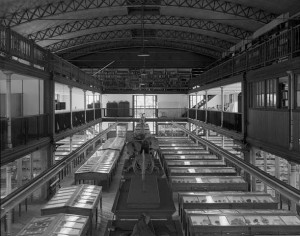 Once a Victorian science institute, now a living, breathing connection to the past. A museum about museums. A look into how we viewed science at the turn of the century.
Once a Victorian science institute, now a living, breathing connection to the past. A museum about museums. A look into how we viewed science at the turn of the century.
In the 1840’s, William Wagner was so passionate about science he gave lectures out of his own home. He amassed an extensive collection of scientific specimens often used as reference in these lectures. At some point, the crowd of Victorians anxious to listen to William Wagner speak grew so large they couldn’t all fit into the room with him. Called the “gentleman naturalist” by his peers, Wagner decided that the popularity of his collection and lectures has grown to the point they needed their own home. He expanded into a new building he named The Wagner Free Institute of Science.
With lofty ideals about continuing lectures and a museum of science open and free to the public, the beautiful Victorian Wagner building was completed and opened in 1865. It houses the natural history collection Wagner collected in his home and allowed him to expand his specimens. There is also a commanding, beautiful lecture hall in which he could continue to lecture all the way up until his death in 1885.
Immediately after the death of William Wagner, renowned biologist and paleontologist Joseph Leidy was brought on to curate and head the research. He expanded the repertoire of the museum and organized the entire collection according to Darwin’s theory of evolution. Every taxidermy and mount, from insects to sea life, was arranged in order of simple to complex organism, rather than genus or species. This reorganization of the museum took place in 1891, and was never changed again. The museum has been upkept beautifully, but not a thing has changed in more than 120 years. From the 1865 handwritten labels of the specimens to the original cherry wood cases made for the museum’s exhibits, everything is frozen in time. A look into a place in our history when technology, scientific knowledge, and the pace of the average life was changing so rapidly, there is both an air of stillness and an air of excitement and possibility to the museum.
There is also an element of humor, seeing a platypus in a case next to a sloth, which is next to an anteater, as an example of Darwin’s theory of evolution. But they also house many “type specimens” – the first identification of a new species. The Institute was the first to discover a skull of a saber-toothed cat on an expedition to Florida. There are complete skeletons ranging from buffalo to English draft horse, as well as taxidermy, shells, minerals, fossils, and of course, a brontosaurus as well.
There are some interpretations around the exhibits explain some of the changes in science and thought from the time of the handwritten placards to today, but it would be wonderful to the the museum embrace its dual role as science museum and ode to Victorian science in a time capsule. They do have a scavenger hunt for adults or young adults that can be downloaded before your trip or picked up there that can explain more details. The have hours set aside for artists who wish to sketch ever Friday afternoon. They continue to hold lectures on the premises, and they sponsor Science on Tap, which is a monthly gathering at the bar National Mechanics in Old City, with presentations by scientists and experts followed by lively debate and conversation.
